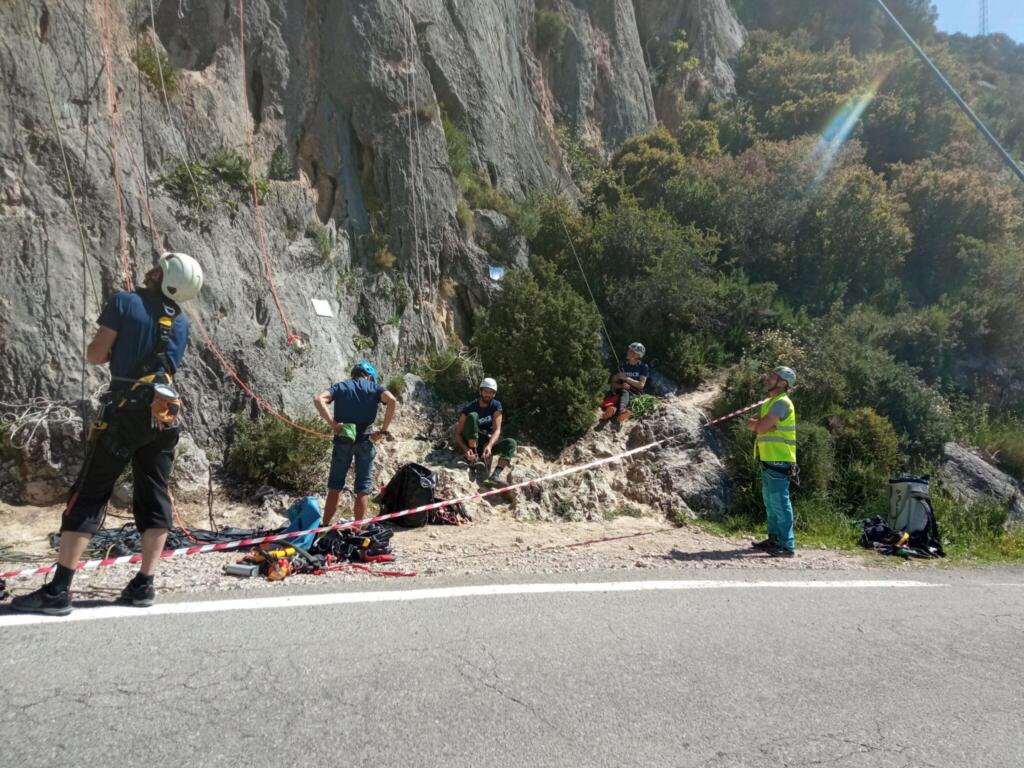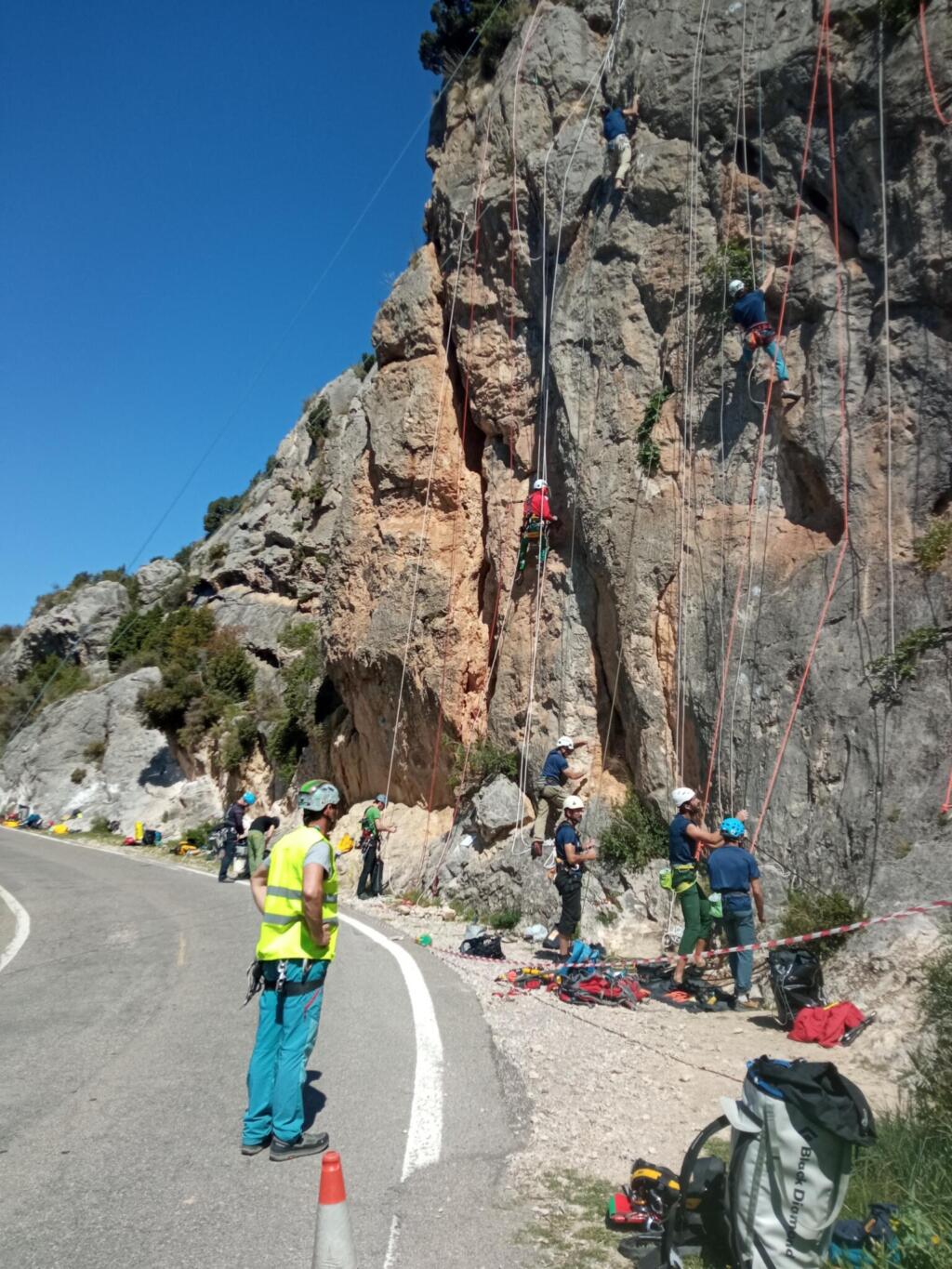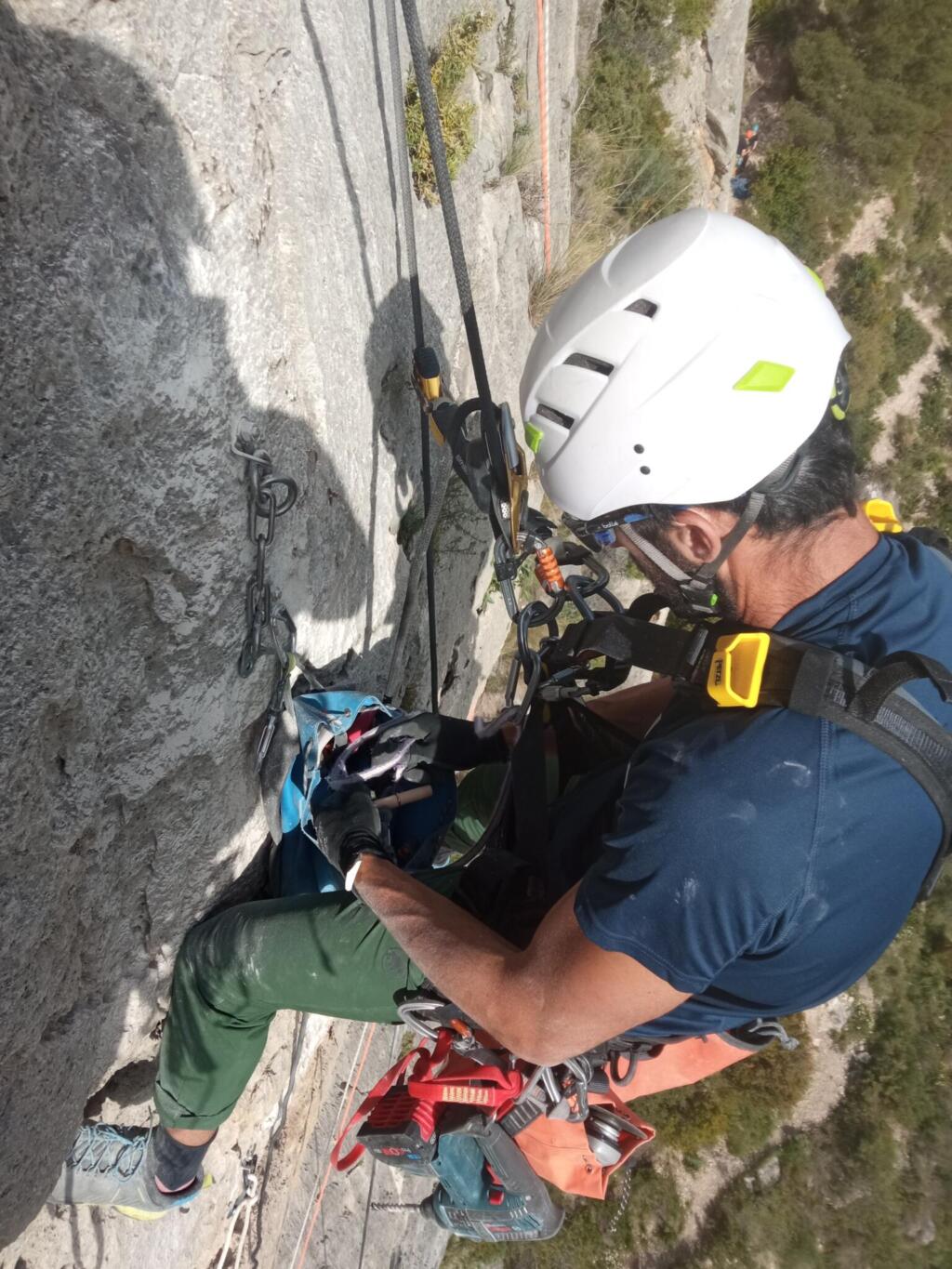Since December 2024, one of the most complete training courses in the field of re-equipment in Vertical Areas of Sports Activity (AVAD) is being carried out. The TAVAD programme, promoted by the Spanish Federation of Mountain and Climbing Sports (FEDME) and the Spanish School of High Mountain (EEAM), seeks to professionalise the maintenance of climbing areas, via ferratas and canyons.
INDEX® has collaborated in this project by providing both approved material and technical advice.
To find out more about this initiative, we spoke to Juan Carlos Castaño, climber and trainer, who gives us more details in this interview.

INDEX®: What is the training of Technicians and Techniques in Vertical Areas of Sports Activity (TAVAD) about? What is its purpose?
Juan Carlos: It is a complete course, made up of 10 modules, ranging from legal, environmental and labour aspects, to content on steel and corrosion, anchor regulations, technical characteristics, installation, use of tools, geology and via ferrata. The course also includes evaluations per module, a week of face-to-face practical training and a final work on re-equipment.
The overall objective is to train people capable of facing the challenges presented by vertical sport activity areas (AVAD): the maintenance and retrofitting of hundreds of thousands of bindings that will sooner or later reach the end of their useful life.
I: What knowledge of anchor installation is essential?
JC: The most important: strictly follow the manufacturer’s instructions during the installation process. This is the only way to ensure that the fastening has been installed correctly.
I: How was the practical part structured?
JC: There was a practical part in partially dolomitised limestone rock, where different types of bindings were installed – MTH, THE and INDEX® brand chemical resins – as well as tensors and descent meetings, specific for canyoning or climbing.
I: What aspects of the workshop were particularly appreciated by the participants?
JC: The versatility of the concrete screws, which are particularly useful for rope positioning and roping. They all have ETA option 1 approval, which guarantees their suitability for use in this type of activity, where safety is a priority.
I: What types of anchors were used during the training?
JC: We worked with THE direct anchors and MTH expansion anchors, used for handrails and rope positioning. MTH in A4 stainless steel and Mopure pure epoxy resin were used for retrofitting.
I: What are the most common mistakes in anchor installation?
JC: Primarily, not following the manufacturer’s instructions. Secondly, using inadequate anchors for the type of support where they are installed.


I: How important is it to choose the right anchor for the support?
JC: It is fundamental. The anchor must exceed load requirements – 15 kN in tension and 25 kN in shear. If it is fixed on a support for which it is not designed, it can fail. It is therefore essential to adapt the type of anchor to the base material.
I: What technical knowledge should future TAVADs have before installation?
JC: They must know how to identify the type of support and which fixing is best suited. They must also know how to handle tools and machinery correctly, know the manufacturer’s technical data sheets – installed length, type of steel, approval, tightening torque, working times in resins – and, of course, use PPE properly and prevent risks.
I: What is the value of collaborating with companies in the sector such as INDEX®?
JC: Very much so. At FEDME we believe that it is essential to have the support and advice of specialised manufacturers such as INDEX®, who not only provide technical solutions, but also care about safety in these increasingly popular sports.
I: Any final comments on this experience?
JC: TAVAD training, organised by the EEAM and FEDME, is constantly growing and evolving. The FEDME’s Facilities and Equipment Department considers that equipment is a fundamental pillar, and that is why we continue to strive to improve year after year.